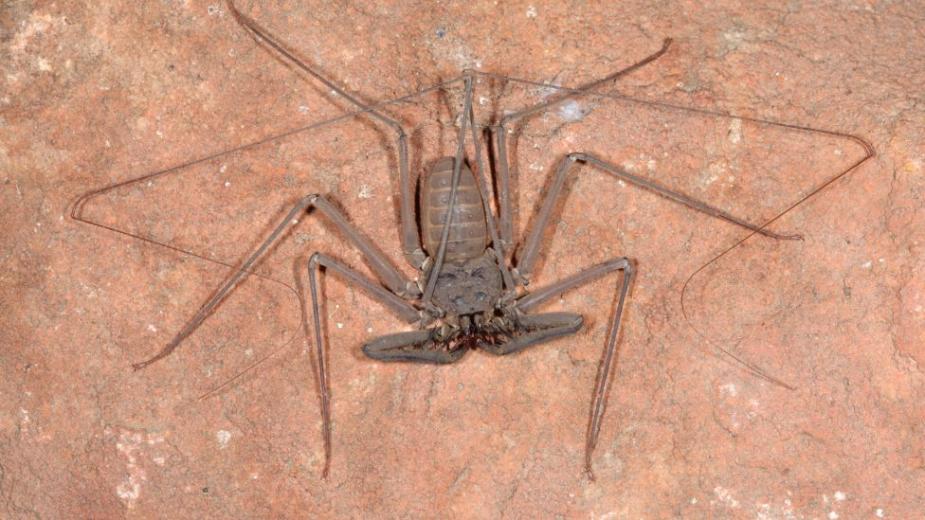Whip spiders of the World has been designed to provide some taxonomic information on whip spiders and a comprehensive list of the scientific literature.

What are Whip Spiders?
Whip spiders are small to large arachnids with large spiny pedipalps, a pair of two-segmented chelicerae, four pairs of legs, of which the first pair are greatly elongated and whip-like, and an ovate abdomen which lacks a terminal flagellum.
They are considered to be most similar to whip scorpions (Uropygi) and schizomids (Schizomida) as all three orders share numerous features in common, such as the antennae-like first pair of legs.
Whip spiders occur in most tropical and sub-tropical regions of the world. Charinids are circum-tropical in distribution. All species of Phrynidae, with the exception of a single Asian species, are restricted to the New World.
Phylogeny
The only comprehensive study of the phylogeny of whip spiders (Weygoldt 1996) recognised two suborders, Palaeoamblypygi for the enigmatic Paracharontidae from West Africa, and Euamblypygi for the remaining four families. The Charinidae were suggested to be the sister to all other Euamblypygi, with Charontidae the sister to Phyrnichidae + Phrynidae.
Fossil Fauna
Fossil whip spiders are known from Palaeozoic, Mesozoic and Cainozoic strata. The three Palaeozoic genera are assigned to the suborder Paleoamblypygi but are currently not placed in any family.
The sole Mesozoic species, Britopygus weygoldti from Brazil, is assigned to the Phrynidae.
Several poorly known Cainozoic species of Phrynidae have been described, mostly from central American amber deposits.
This website contains published data up to the end of 2011.
Important references
- Harvey, M.S. (2003). Catalogue of the smaller arachnid orders of the world: Amblypygi, Uropygi, Schizomida, Palpigradi, Ricinulei and Solifugae. CSIRO Publishing: Melbourne.
- Weygoldt, P. (1996). Evolutionary morphology of whip spiders: towards a phylogenetic system (Chelicerata: Arachnida: Amblypygi). Journal of Zoological Systematics and Evolution Research 34: 185-202.
- Weygoldt, P. (2000). Whip spiders. Their biology, morphology and systematics. Apollo Books: Stenstrup.


